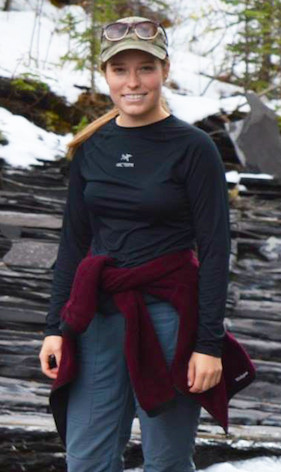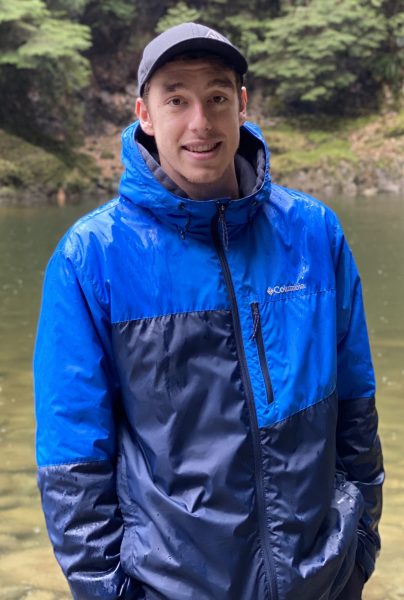Graduate students Camille Roberge and Brandon Williams have each been awarded $7,500 Environmental Science and Natural Resource Science Fellowships as a result of their commitment to research and potential for future contributions to their respective fields.
Roberge and Williams, both Master of Science in Environmental Science (MScES) students, are encouraged by this recent honour.

Camille Roberge
Roberge, whose research explores the impact of forest cutblocks (harvested areas) on declining moose populations, is working with the Nlaka’pamux Nation Tribal Council, who recognize the vital role these animals play in the well-being of their community.
“They’re very concerned over the decline in the moose population in their traditional lands,” says Roberge, who’s studying wildlife management unit 3-18, which spans an area west of Kamloops to Merritt.
“The moose are an incredibly important species for them, so they want to figure out why this is happening. If you look at historical imagery, this beautiful, forested land is now a tapestry of cutblocks. Forestry is seen in every single part of that management unit.”
Cutblocks and moose health
Under the supervision of Professor Karl Larsen, Roberge is looking at whether plants and cutblocks provide lower nutritional quality than plants growing in forests.
“There’s a researcher at UNBC with some preliminary work at a site in Northern BC, and he found differences in plant nutritional quality between cutblocks and forests,” she says. “The plants growing in cutblocks have greater access to sunlight, and so they have a lot more energy to put into defensive compounds to defend against herbivores like moose. Some of these defensive compounds bind plant proteins. So when the moose is digesting the plant, it can only extract a portion of the protein and the rest passes all the way through, which decreases the nutritional quality of the plant.”
Roberge is also following 12 female moose over the course of two years to see if the cutblocks affect their health.
“Each moose uses cutblocks a different amount, so I’m seeing if the moose that use cutblocks more, and are more reliant on the food in cutblocks, have less fat accumulation and are less likely to get pregnant or successfully keep their pregnancies over winter,” says Roberge.

Brandon Williams
Prescribed burning and native grassland
Williams’s research uses traditional Indigenous knowledge of prescribed burning as a tool to transition an agronomic dominated grassland community to a native plant community.
“My work represents a unique partnership between the Nlaka’pamux First Nations and the Highland Valley Copper mine, where a common goal is to transition the now currently agronomic dominated plant community at one of the tailings holding facilities to a more biodiverse native grassland,” says Williams, who is working with TRU Professor Lauchlan Fraser.
Considered mine waste, tailings can contain high levels of hazardous contaminants and heavy metals. As a result of this, mining companies are responsible for landscape restoration of the area surrounding the holding facilities.
“Historically, this was done by simply creating pastureland by sowing agronomic grass species onto the landscape,” says Williams. “The problem, however, is these species are extremely hardy and can grow in the worst of conditions, and thus can become good competitors in that environment, which limits the amount of new species that can enter. As mines are now concerned with enhancing biodiversity of these sites, they are looking for ways to do this. Prescribed burning, which can help introduce new species after burning, was introduced as a way this might be done.”
Impacting student research
Receiving these grants has been hugely beneficial for these students, not only financially, but also by acknowledging their previous research excellence.
“I’m so over the moon and grateful that I’ve been given this award,” says Roberge. “It really means that I have so much worry taken off my shoulders in terms of the financial stress of going to school. It also means that the people I’m working with at TRU see the validity in what I’m working on and understand its importance. I live and breathe this every day. I know how important this is to the Nlaka’pamux Nation and being able to share that with the TRU community and have them understand the importance of the work is validating.”
“I’m ecstatic,” says Williams. “This award helps me stay and finish my work. It’s very exciting this money can support me through that. And it’s so important for me to get my work out there.”
These fellowships were generously created by an anonymous donor. Students who receive these prestigious awards are selected based on their demonstrated potential for future contributions to our understanding of the environment.

